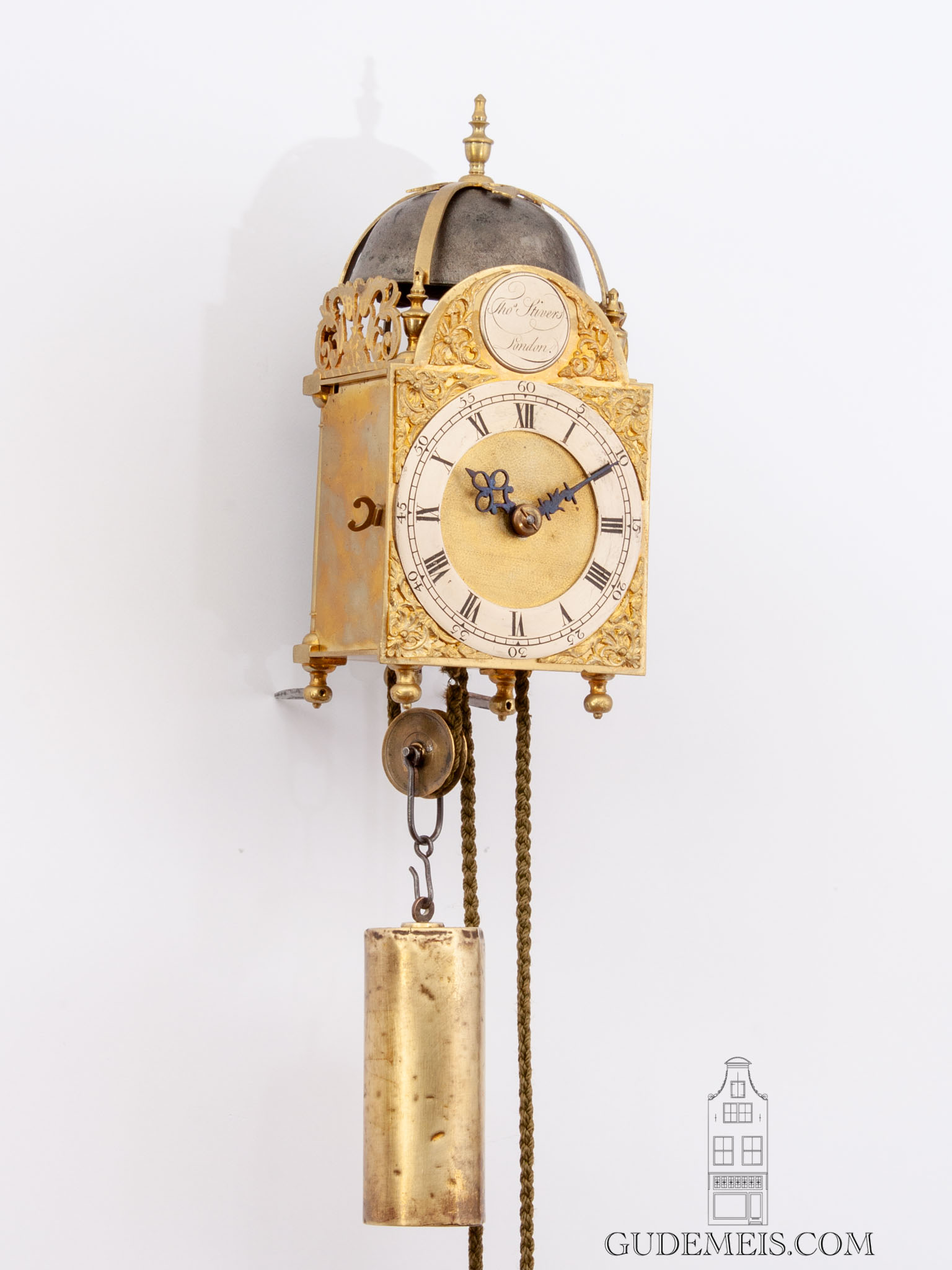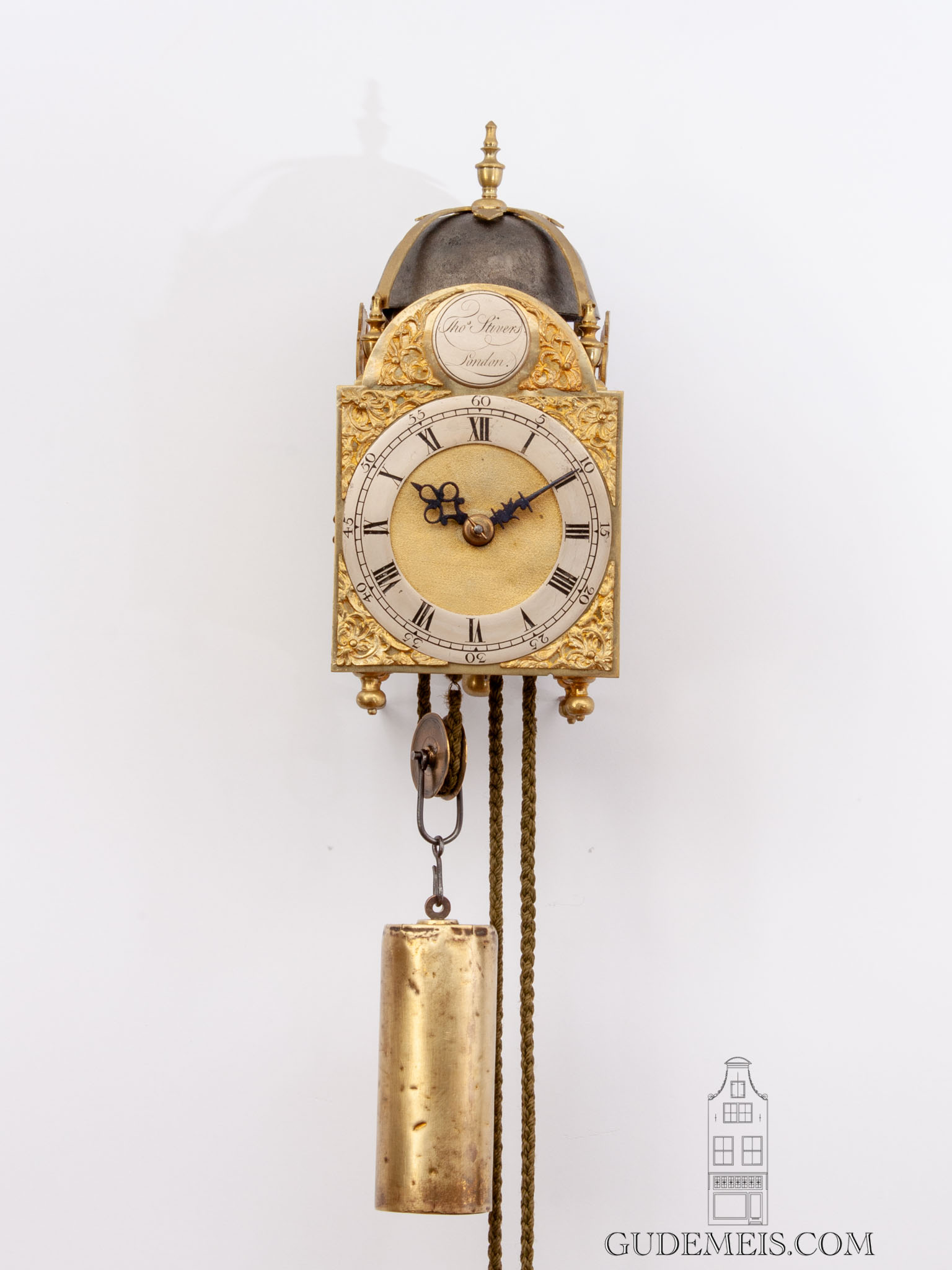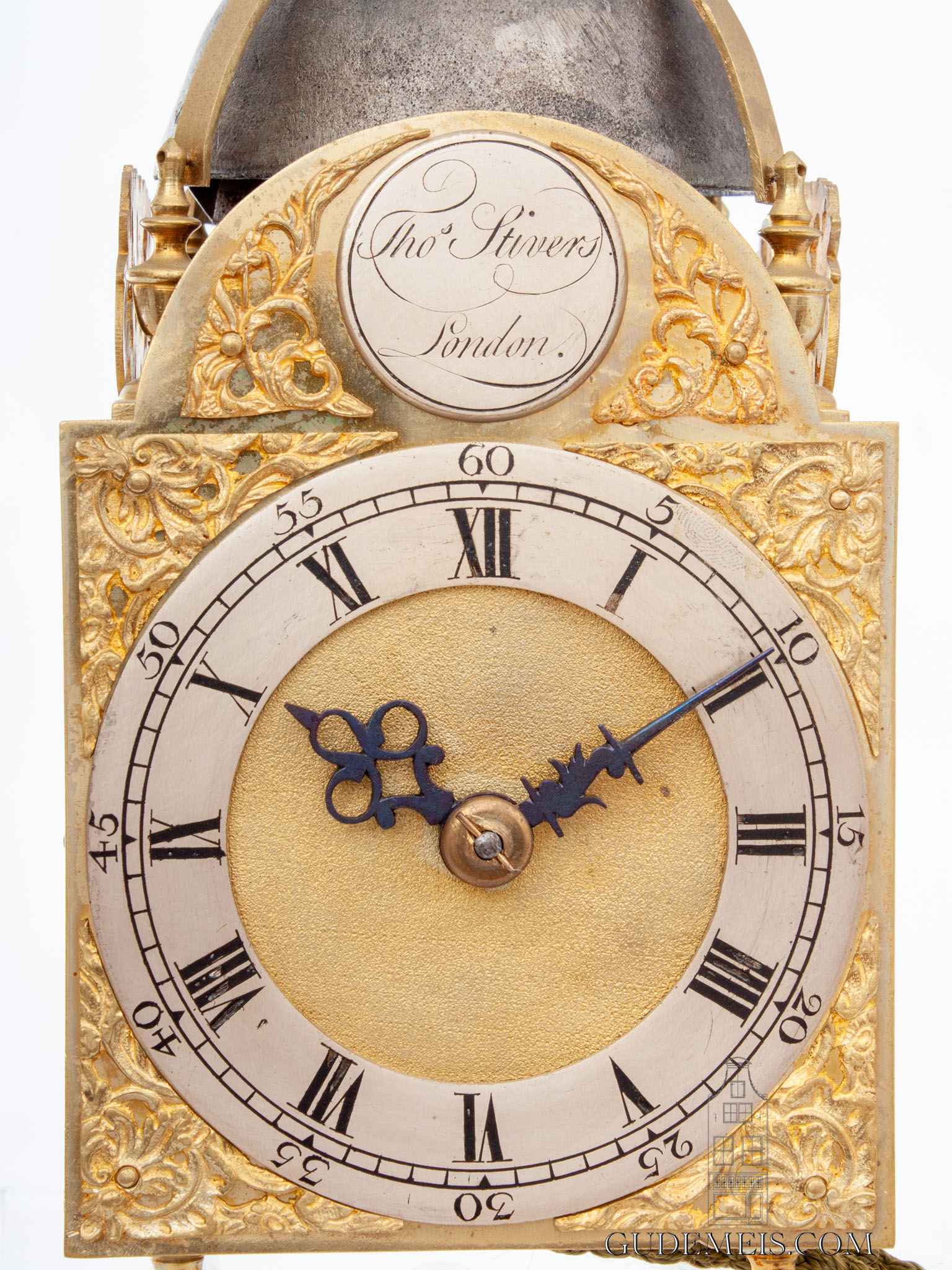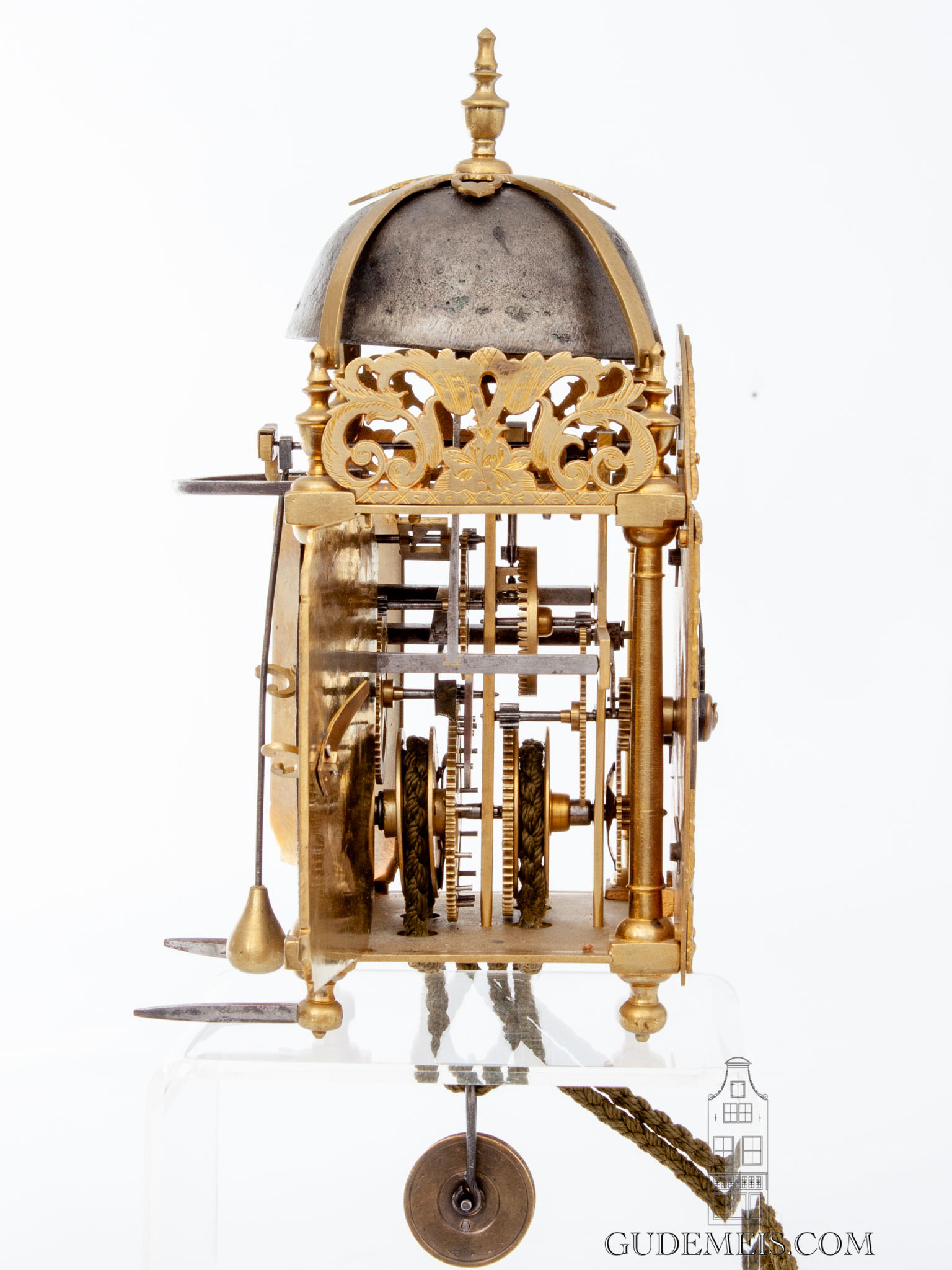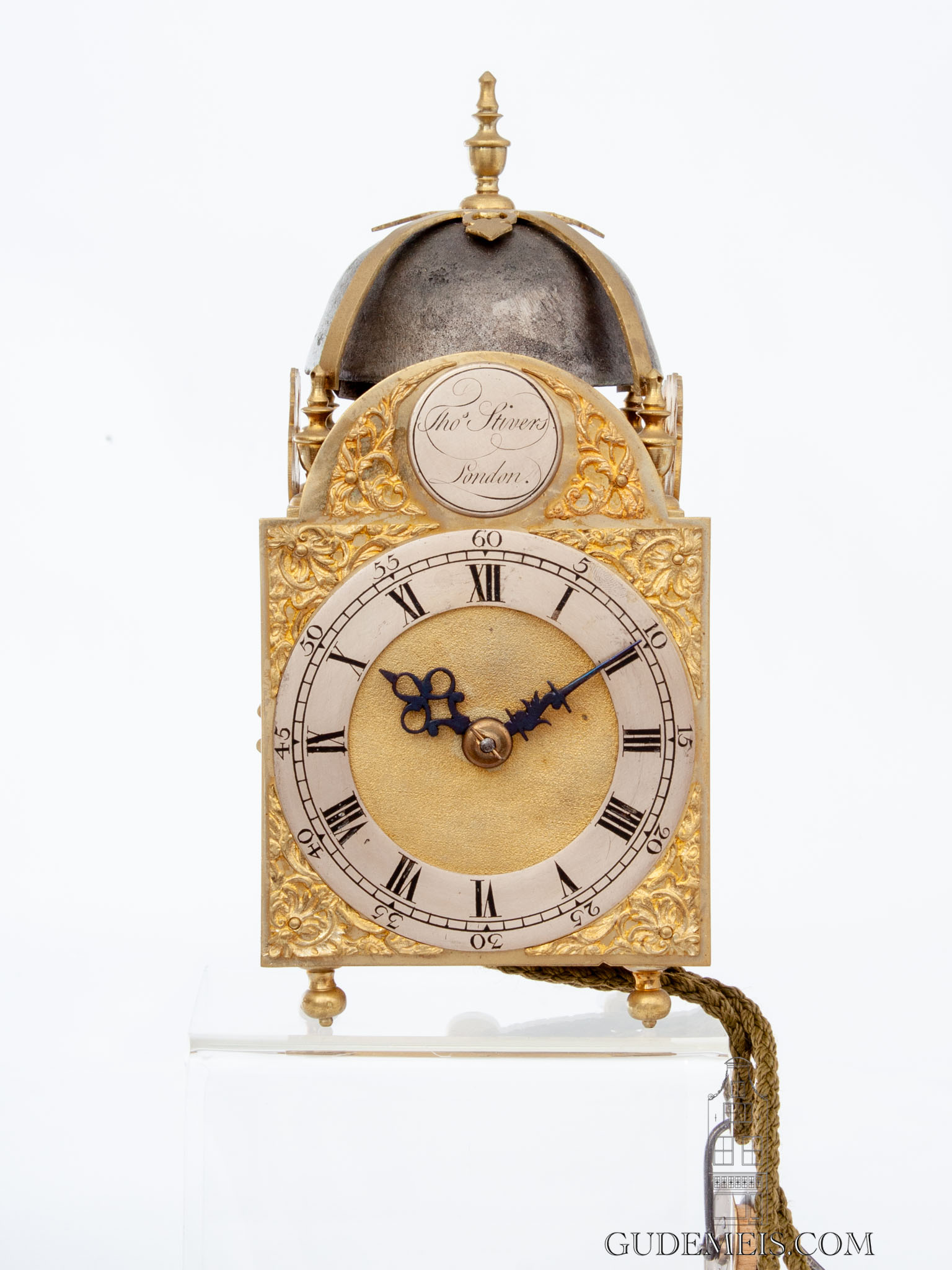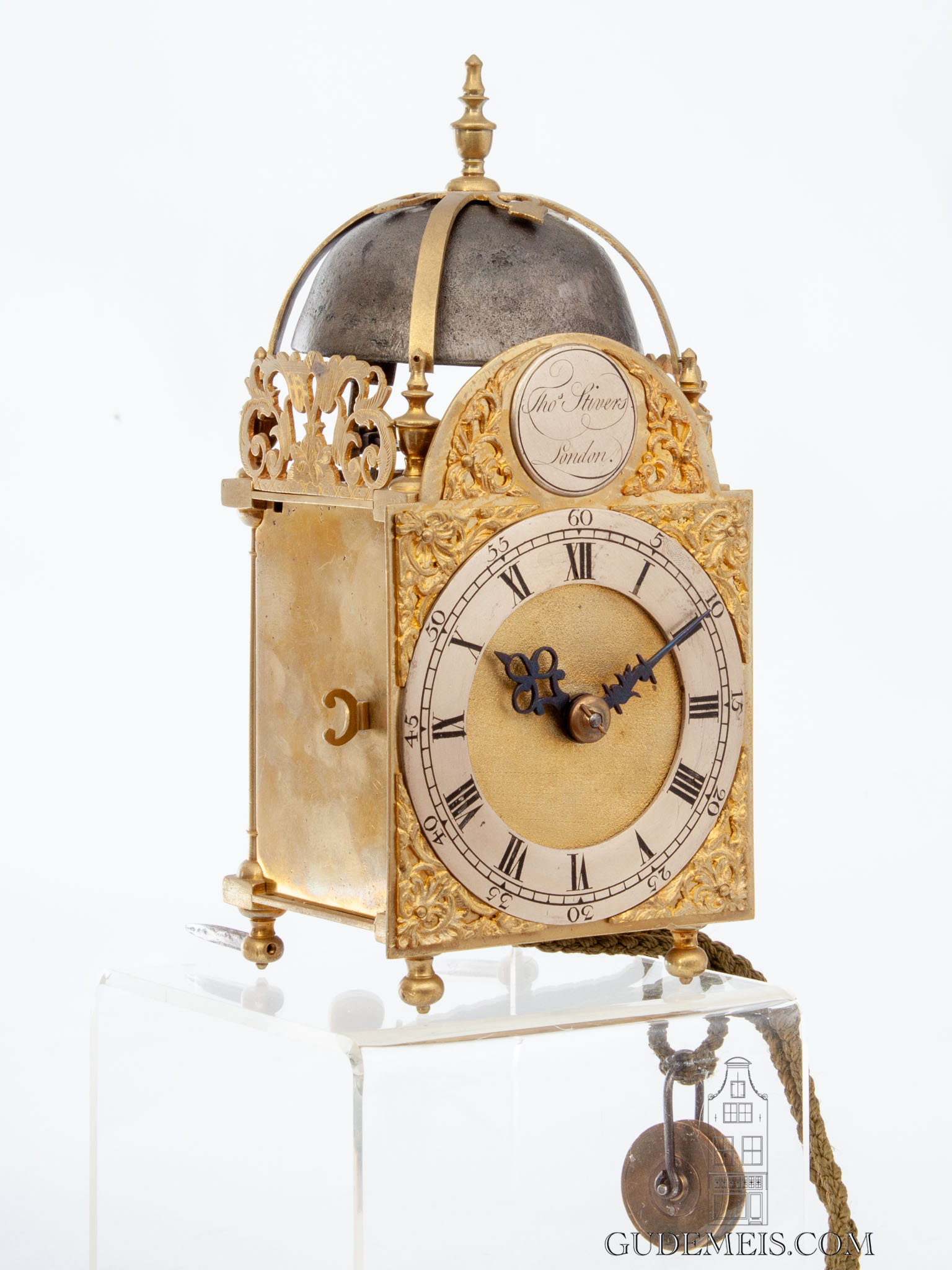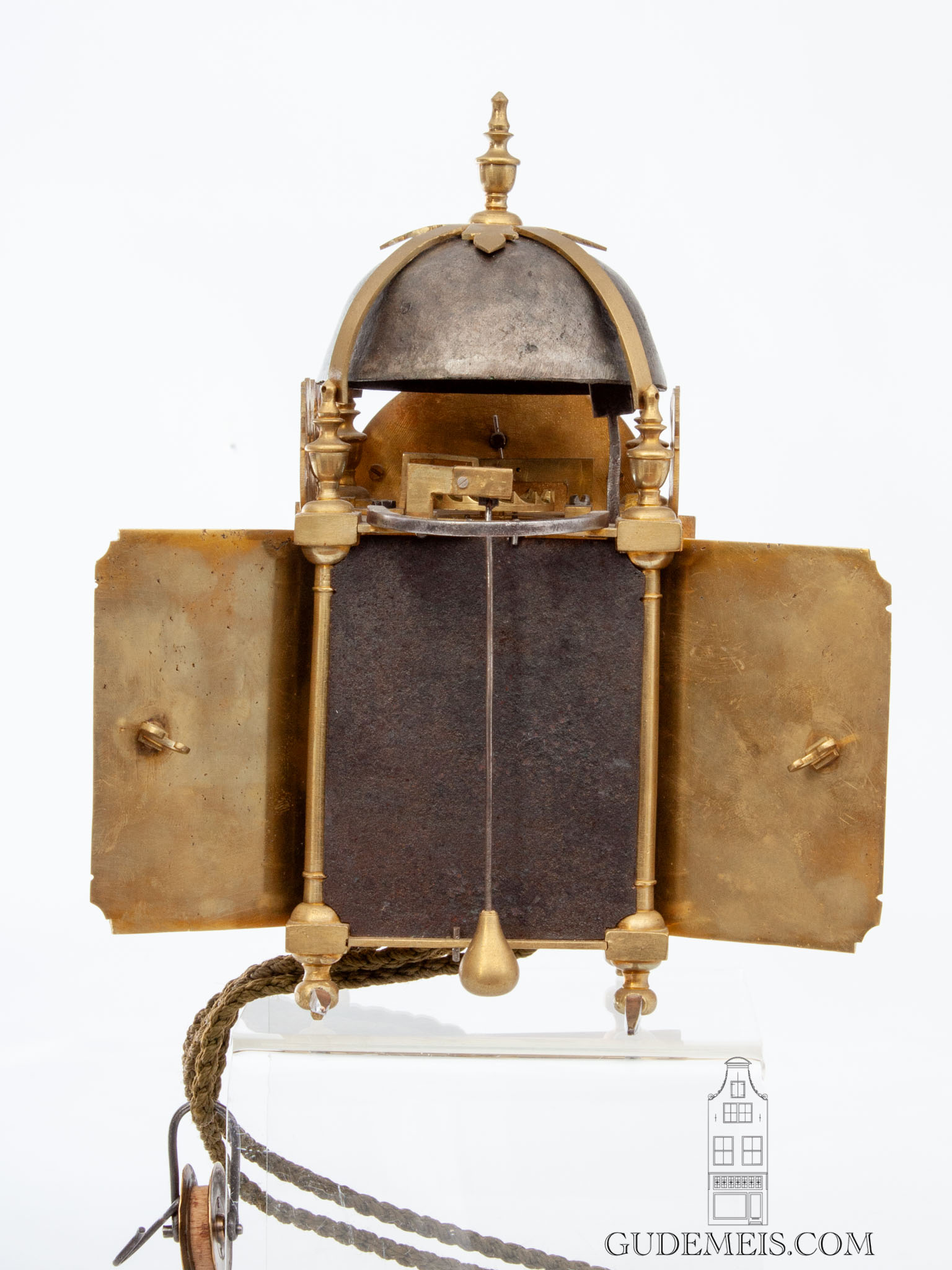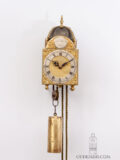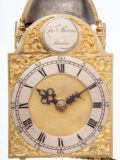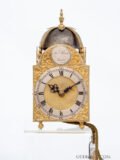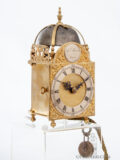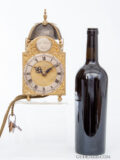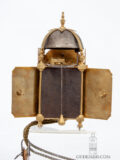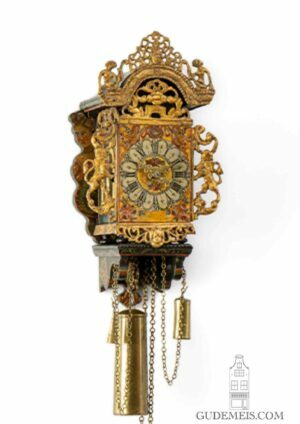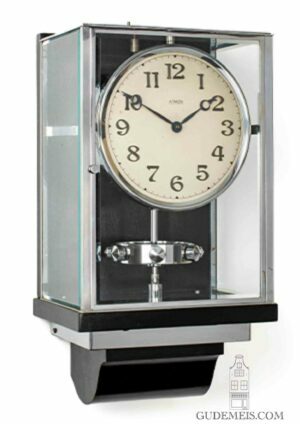A small English brass striking lantern clock, Thomas Stivers London, circa 1750.
Description
Lantern clock
Around 1600 the first clocks that we now call ‘lantern clock’ are made in England. The term lantern clock is a later invention that was probably introduced in the nineteenth century. In written wills and inventories from the day, these clocks are usually mentioned as ‘brass clocks’ or ‘house clocks’. At the end of the third quarter of the seventeenth Century the production of these lantern clocks increased tremendously. This greater production enabled some craftsmen to specialize in making certain parts, for example dials, hands and bells. This ‘division of labour’ increased production and quality with lower cost. A slight disadvantage is uniformity in appearance and size. English clocks with deviating proportions are therefore rare and sought-after. Besides this one can state the small clocks are rare because these would usually a second or third clock that would be bought for a household. A first clock would be for living quarters large enough to be visible for all. Since clocks were expensive not many could afford more than one. Often small lantern clocks lack striking since these were intended for the sleeping quarters. This small clock striking each hour not only makes it more rare, it also mnakes it more attractive with its pleasant sound.
chapter ring
The 10-cm arched brass dial has an applied silvered and engraved chapter ring with Roman chapters and Arabic five-minute indication. The pierced hands are made of blued steel. The corners are embellished with cast brass Rococo spandrels. There are similar spandrels in the arch next to the annular silvered signature plaque inscribed Tho.s Stivers London.
Verge escapement
The movement is driven by a weight on an ‘endless rope’ and is of thirty hour duration. It has verge scapement in combination with a short fixed pendulum. The clock strikes the hours on a bell by means of a countwheel. The top and bottom plate of the movement are connected by four well turned pillars.
frets
The clock is surmounted by a bell cross with a central urn final which is supported by four further urn finials. To the sides are foliate pierced and engraved frets above the doors giving access to the movement. The clock is suspended on the wall by a hoop and spurs.
